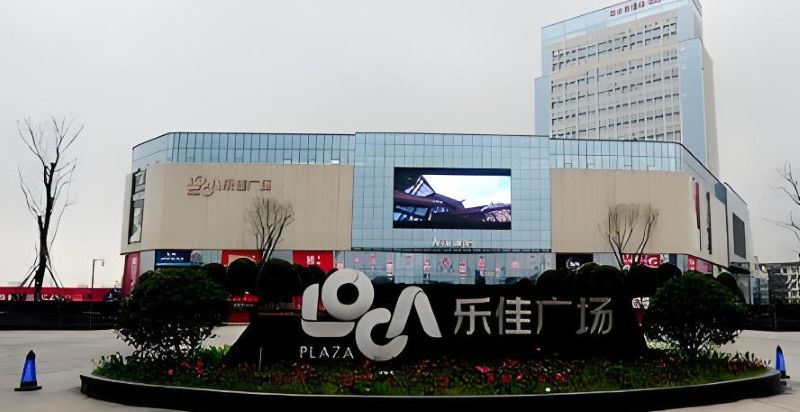2025 Outdoor Advertising Approval Process: A Step-by-Step Guide 🚀
2025-06-25Tianci MediaViews:159
Highlights
This guide breaks down the 2025 outdoor advertising approval process, covering legal foundations, required materials, workflow steps, key timelines, and practical tips to help you launch compliant campaigns on time.
As urbanization and digitalization accelerate in 2025, outdoor advertising remains a prime channel for brand visibility and city-scape enhancement. Yet stricter regulations and complex approval workflows can trip up even seasoned marketers—delays, fines, or forced dismantling await those who overlook the rules. This guide breaks down the 2025 outdoor advertising approval process, covering legal foundations, required materials, workflow steps, key timelines, and practical tips to help you launch compliant campaigns on time.

1. Know the Rules First ⚖️
Outdoor ads must comply with both national and local regulations:
- Advertising Law of the People’s Republic of China (2025 Revision)
- Ads must be truthful, legal, and free of misleading content.
- Administrative Measures for Outdoor Advertising Facilities
- Specifies location restrictions, structural safety standards, and urban appearance requirements.
- Local Ordinances
- City management, planning, and market-regulation authorities issue detailed local rules.
- Example: Beijing bans skyline-height billboards in certain districts; Shenzhen limits LED screen brightness.
2. Prepare Complete Documentation 🧾
Submit these core materials to avoid endless back-and-forth:
- Business Credentials
- Copy of business license
- Legal representative’s ID
- Design Schematics
- Front- and side-view renderings, mock-ups
- Dimensions, material specs (LED, vinyl, steel frame)
- Site plan showing proximity to fire exits, signage, etc.
- Approval Forms & Reports
- Outdoor Advertising Application Form
- Urban-Appearance Coordination Certificate (if required)
- Environmental Impact Mini-Report (for large installations)
- Structural Safety Assessment (for steel/high-elevation builds)
Pro Tip: hire a professional designer/engineer to supply both concept and construction drawings.

3. Six-Step Approval Workflow 🏁
- Preliminary Research & Outreach 📞
- Inspect potential sites, consult property managers, street authorities, and urban management teams.
- Design & Document Assembly 🖌️
- Finalize artwork, compile all forms, double-check for completeness.
- Submit & Multi-Department Review 📤
- File with city management or municipal office.
- Special sites (heritage zones, transit hubs, major shopping districts) require joint review.
- On-Site Inspection & Permit Issuance 🏗️
- After approval, obtain the “Outdoor Advertising Facility Permit” and schedule a site inspection.
- Production & Installation 🛠️
- Build strictly to approved specs, coordinate with inspectors for final sign-off.
- Platform Registration & Monitoring 📡
- Register the completed ad on the designated municipal platform.
- Digital screens must link to the city’s remote-monitoring system.
4. Timeline Overview: Plan for 1–3 Months ⏰
| Stage | Estimated Duration | Key Notes |
|---|---|---|
| Research & Early Outreach | 1–2 weeks | Site surveys, stakeholder buy-in |
| Design & Document Prep | 2–4 weeks | Drawings, reports, form-filling |
| Multi-Dept. Joint Review | 2–4 weeks | Heritage, traffic, environment offices |
| Installation & Inspection | 1–2 weeks | Production, on-site checks |
| Registration & Go-Live | ~1 week | Digital ads require online platform linkage |
Leave extra buffer for holidays or sudden policy updates.
5. Best Practices & Actionable Tips 💡
- Design Standards First
- Legible fonts, non-distracting colors, moderate night-time brightness, clear from both near and far.
- Proactive Stakeholder Engagement
- Liaise early with property owners, street committees, and urban management.
- Offer community benefits (e.g., public-service bulletin space) to win support.
- Safety & Sustainability
- Use fire-retardant, wind-resistant, waterproof materials.
- Ensure structural design meets at least Grade-8 wind load requirements.
- Digital Screen Requirements
- Connect LED displays to the municipal monitoring platform.
- Enable remote control, data reporting, and fault alerts.
- Ongoing Maintenance
- Schedule regular cleaning, content updates, and safety inspections.
- Apply for renewals or modifications before permit expiration.

By mastering the 2025 outdoor advertising approval process—understanding regulations, preparing thoroughly, coordinating across departments, and leveraging technology—you can turn compliance into a competitive advantage. Get it right, and your outdoor campaign won’t just go live on schedule; it will shine, drive impact, and fuel your brand’s growth!














